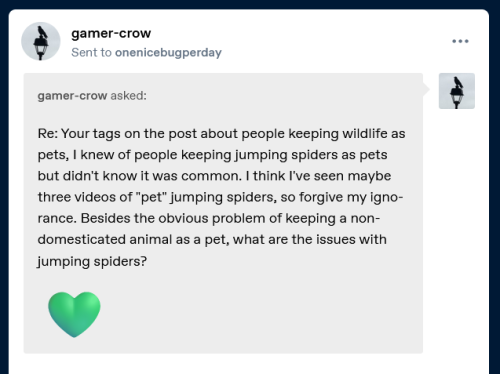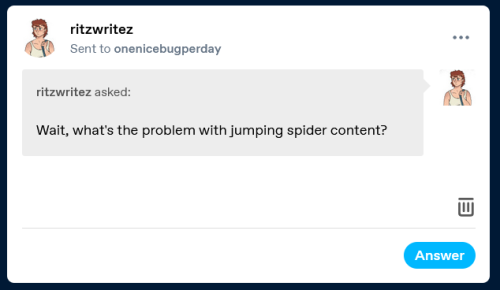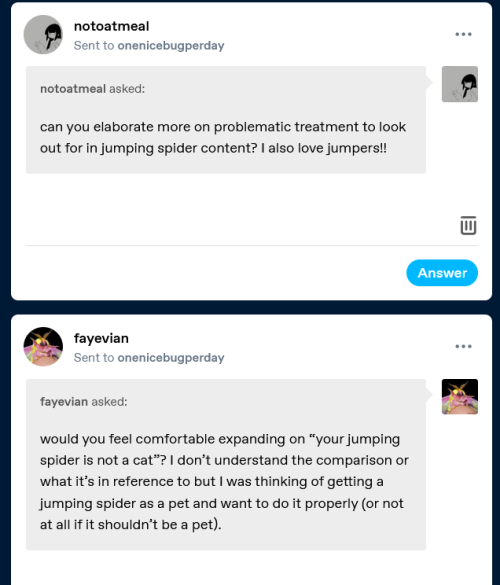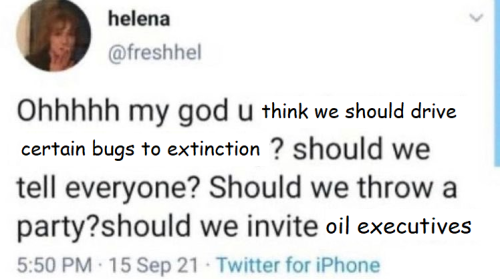Important Anomalocaris Dorsal Carapace Representation... The Anomalocarapace...
important anomalocaris dorsal carapace representation... the anomalocarapace...

sick and tired of inaccurate anomalocaris paleoart ,, decided to take matters into my own hands
More Posts from Phoronopsis and Others
“Measuring sea cucumber body dimensions and weight and determining their relationship is notoriously difficult.” — Prescott, Zhou & Prasetyo 2015
“Tagging sea cucumbers is notoriously difficult because of their plastic nature and autolysis capacities.” — Gianasi, Verkaik, Hamel & Mercier 2015
“Nevertheless, marking and tracking sea cucumbers is notoriously difficult and represents a serious challenge.” — Rodríguez-Barreras, Lopéz-Morell & Sabat 2016
“Obtaining accurate but non-destructive mass and morphology measurements of holothuroids is notoriously difficult because they readily change shape and retain water in their body cavity.” — Munger, Watkins, Dunic & Côté 2023
the notoriously difficult cucumber

image by Amaury Durbano
scientists: oh hey we found a new species of deep sea feather star, neat :)
the news: TERRIFYING and ALIEN creature with ONE THOUSAND ARMS discovered LURKING in the DEEP ABYSS of the sea
the public: omg im never swimming in the ocean again!!!
the animal:

Even if a species of bug exhibits some kind of social touch among themselves (which I believe some are known to, though for the large majority of species I doubt there's any data on it), it's not going to be welcome from a towering colossus that they literally may not even be able to fit inside their whole field of vision. I feel like a lot of people forget just how big we are compared to most bugs
you know that one popular tumblr post that goes like "humans will pet anything" "well how wonderful that we live on a planet full of things that like to be petted!", or various other posts you see around the internet saying stuff like "humans evolved hands so we could pet all the animals 😌". sometimes I wonder how much those posts might have left actual lasting damage on public perception of animal behavior, like I'm sure they didn't intend to but like... did they
Well I certainly didn’t expect to illicit so many questions when I reblogged this post and added some tags about jumping spider content online.








Firstly, let me say there’s nothing wrong with keeping jumping spiders as pets. I have one myself. She’s a captive bred regal jumping spider. She’s currently a bit over two years old. I’ve had other jumping spiders as well, but they passed of old age and in one instance, a failed molt, which is fairly common.
Before and after getting pet jumpers, I joined some jumper groups, read a lot of care guides, and watched a slew of videos about keeping them.
It became obvious pretty quickly that apparently due to their cute fuzzy appearance, large round eyes, and intelligent behavior, people (owners, admirers, and popular content creators) assign human and mammal emotions and behaviors to them, often to their detriment.
I personally believe bugs are complex creatures that can be intelligent and have emotions, but that those emotions and behaviors are NOT analogous to human or mammal behavior and ignoring their natural needs and behaviors means you’re likely not providing proper care for them.
This is mainly about handling. Bugs don’t want to be handled. They get nothing positive out of it emotionally. They don’t want to be pet or cuddle with you. They don’t want to hang out with you. You’re a big scary predator, and it likely wants to get away from you. Forcing handling can stress, injure, or kill them. That’s why I tagged the post (linked above) “your spider is not a cat.” It doesn’t seek affection from you.
I can’t tell you how many posts or videos I saw where people were super upset because they let their jumper out of its enclosure to handle it and it either escaped and got lost or they somehow crushed it and killed or injured it badly. I’ve also seen people chasing their jumper around its enclosure trying to grab it or get it to jump onto their hand when it’s clearly just trying to hide.
As an example, a very common thing I’ve seen in videos about jumpers is people saying when they lift their front legs at you and jump or climb onto you/your hands it’s because they “want uppies” and want to be pet and be close to you. This is a wild misreading of behavior. Sometimes raising the front legs is a defensive display, trying to make itself look larger to scare away a threat. Other times, they’re waving their legs around to sense and feel their environment, or preparing to jump onto something. They are arboreal, and their natural behavior is to find a high vantage point, so climbing onto the big thing (you) nearby is normal. It’s not because it seeks your affection.
Certainly if you DO handle them frequently they can get used to it, and it becomes less stressful for them. But in my opinion the dangers outweigh any positives, and I don’t handle mine. These are wild animals that have not been domesticated, even when captive bred. If you want to give them enrichment, and you should, offer them prey to chase or interesting things to explore in a larger enclosure. For those that do still handle them, I’d encourage you to watch their behavior closely and read the spidery cues they’re giving you rather than assuming they’re feeling what a cute little mammal might be feeling in the same scenario.
I could go on with specifics about certain videos, but I wasn’t planning on writing a huge post and this is already long. Also I’m sure many people would disagree with me about some things I’ve said, and I’m not going to argue about anything. This is just how I feel based on what I’ve seen of online jumping spider content, and it’s why I no longer interact with most of it.
The first image linked is not actually a priapulid but a sea cucumber in its spawning posture! It was misidentified on iNaturalist and went viral before it was corrected— see the original observation here. (It gets kinda heated which I think is kinda funny. Penis worms are serious business!) I have always said before that I want internet fame specifically for two reasons: to make PSAs about Anomalocaris’s head carapace which everybody always leaves out of drawings because of that one inaccurate museum model, and about the incorrectly identified sea cucumber photo about which is now like the first image result you get when searching for penis worms and is my NEMESIS 😠 (the misinformation, not the photo or the sea cucumber, those are great)
For all the worm fans— priapulids are super easy to identify; there are as of the time of writing only 22 recognized species, and for many of them the only photos of them are from articles in scientific journals. Over half the species are microscopic, and the macroscopic ones are mainly found in polar regions, often in the deep sea, where they are usually burrowed in sediment and thus are little-encountered by people. The only one of them that is commonly photographed (and studied) is Priapulus caudatus, which is broadly found across the northern northern hemisphere even in shallow waters and I think probably has to be the most accessible species in general. They look like this:

image by Thomas Trott
This species accounts for probably 99% of the images of priapulids out there, and its relatives look rather similar, such as its southern hemisphere counterpart Priapulus tuberculatospinosus or the two-tailed species Priapulopsis bicaudatus. The intricate, feathery tails (referred to in the literature as “caudal appendages”) are probably the most distinctive feature of this group; they are believed to be involved in respiration, though as with many things about the phylum it is not known for certain. (See this recent paper for a review of macroscopic priapulid morphology.) In the zoomed-out photos of that sea cucumber you can see on the iNat page, it lacks a tail which is a dead giveaway that it is not any of these; also note that while it has some longitudinal striations along what sorta looks like a proboscis, they don’t actually bear any teeth! The spined, toothed proboscides of priapulids are indeed super cool and are their most distinctive feature setting them apart from other proboscis-bearing worms like peanut worms or spoon worms, which are often also misidentified online as priapulids. A fun fact is that the shape of their teeth varies across species in a way that appears to be closely correlated with their diet, see this paper for a neat study that uses tooth shapes to examine the different ecological niches occupied by extant priapulids and their Cambrian relatives!
The only other macroscopic priapulids that don’t look much like Priapulus are the two species Halicryptus spinulosus and Halicryptus higginsi, the latter of which I believe there are literally like two full-body photos in existence of it, one of which is from a login-walled journal article from 1999 and the other of which is one of the specimens from that 1999 article photographed after 25 years preserved in a museum. There’s a decent number of photos floating around of H. spinulosus (though still not as many as P. caudatus); they look like this:

image by Claude Nozères
As you can see, Halicryptus lack tails and have a much less prominent proboscis than Priapulus and its relatives, which you can only see the spines of on the very tip; H. spinulosus in particular has a rather short and small body that distinguishes it a lot, while H. higginsi is the largest known species of priapulid in the world (see this paper for a review of both of them). They’re maybe less distinctive-looking but idk, I don’t know off the top of my head if there’s super anything else you would mistake them for, and images of them are pretty uncommon anyway. In any case as far as macroscopic priapulids go, these are the only ones you have to look out for; if you’ve got those down you’re all set! As stated before, most priapulid species are actually microscopic; just for fun here’s the tropical meiobenthic species Tubiluchus corallicola:

image by Museum of Comparative Zoology, Harvard University
look at that squiggly tail!
And yeah in conclusion priapulids are super cool and underrated and I wish there were more people paying attention to them; there’s soooo many neglected taxa that we’re still only just discovering basic aspects of their biology and priapulids are one of them! If you want to see their amazing extensible proboscis in action, linked below is by far the best priapulid video out there, I highly recommend it. And most of all remember everybody THAT PHOTO IS A FRICKING SEA CUCUMBER, NOT EVERY WORM THAT LOOKS LIKE A PENIS IS A PENIS WORM AAAAAAA 😭😭😭
Can't believe any real animal has teeth as awesome as penis worms have.


They are meat eaters :)
Conch snails actually do have some of their own tricks up their shells— their foot bears a sharpened operculum that they use to push themselves around much faster than a lot of slow predators (including cone snails) can move, or even to fight back. It's believed that their high-resolution vision, which is some of the best among all known gastropods, allows them to detect and react to predators in advance (source 1, 2)
Here's a video of a conch snail in action:

How are conchs even real
I want to play "let's ___ with mama" with the shrimp I study, but they generally do not meet their offspring because of how their life cycle works. The shrimp put their eggs in the mud and then the young may not hatch for years, until some obscure shrimpy conditions are met. They live with a mixed group of strangers and relatives, some of which may be literal decades older, but not mama.
Leeches, on the other hand, carry their young on their underside. Let's remain safely attached to mama

-
 lordofhounds liked this · 2 weeks ago
lordofhounds liked this · 2 weeks ago -
 bristlenose liked this · 1 month ago
bristlenose liked this · 1 month ago -
 homosexualisopod liked this · 1 month ago
homosexualisopod liked this · 1 month ago -
 thejopperrrrr liked this · 1 month ago
thejopperrrrr liked this · 1 month ago -
 skrimpinatree liked this · 1 month ago
skrimpinatree liked this · 1 month ago -
 littleorangemushrooms liked this · 1 month ago
littleorangemushrooms liked this · 1 month ago -
 ourlifestooshort liked this · 1 month ago
ourlifestooshort liked this · 1 month ago -
 oarfjsh reblogged this · 1 month ago
oarfjsh reblogged this · 1 month ago -
 itriedtoescape liked this · 1 month ago
itriedtoescape liked this · 1 month ago -
 clavainov reblogged this · 1 month ago
clavainov reblogged this · 1 month ago -
 lemonbeetle liked this · 1 month ago
lemonbeetle liked this · 1 month ago -
 honeyandsickle liked this · 1 month ago
honeyandsickle liked this · 1 month ago -
 adkay13 liked this · 2 months ago
adkay13 liked this · 2 months ago -
 phoronopsis liked this · 3 months ago
phoronopsis liked this · 3 months ago -
 phoronopsis reblogged this · 3 months ago
phoronopsis reblogged this · 3 months ago -
 redheadcinnamon liked this · 3 months ago
redheadcinnamon liked this · 3 months ago -
 volcanicraptor reblogged this · 3 months ago
volcanicraptor reblogged this · 3 months ago -
 volcanicraptor liked this · 3 months ago
volcanicraptor liked this · 3 months ago -
 coolcabinet liked this · 4 months ago
coolcabinet liked this · 4 months ago -
 witch-of-the-creek reblogged this · 4 months ago
witch-of-the-creek reblogged this · 4 months ago -
 anomalocarislover45 liked this · 5 months ago
anomalocarislover45 liked this · 5 months ago -
 wolfina2 reblogged this · 5 months ago
wolfina2 reblogged this · 5 months ago -
 deadxrock reblogged this · 5 months ago
deadxrock reblogged this · 5 months ago -
 autisticdrizzt reblogged this · 6 months ago
autisticdrizzt reblogged this · 6 months ago -
 deepwater-abyss liked this · 6 months ago
deepwater-abyss liked this · 6 months ago -
 30spiders reblogged this · 6 months ago
30spiders reblogged this · 6 months ago -
 30spiders liked this · 6 months ago
30spiders liked this · 6 months ago -
 errorcode404linknotfound liked this · 7 months ago
errorcode404linknotfound liked this · 7 months ago -
 unclaimed-garbage liked this · 7 months ago
unclaimed-garbage liked this · 7 months ago -
 orangepaw-uzu liked this · 7 months ago
orangepaw-uzu liked this · 7 months ago -
 gallinitasenlatierra liked this · 7 months ago
gallinitasenlatierra liked this · 7 months ago -
 demonicheartbreakk liked this · 7 months ago
demonicheartbreakk liked this · 7 months ago -
 kitkatcoyote liked this · 7 months ago
kitkatcoyote liked this · 7 months ago -
 willoillo liked this · 7 months ago
willoillo liked this · 7 months ago -
 sombrathedragon reblogged this · 7 months ago
sombrathedragon reblogged this · 7 months ago -
 sombrathedragon liked this · 7 months ago
sombrathedragon liked this · 7 months ago -
 lunala64 liked this · 7 months ago
lunala64 liked this · 7 months ago -
 ironkowboy liked this · 7 months ago
ironkowboy liked this · 7 months ago -
 mineralsrocksandfossiltalks liked this · 7 months ago
mineralsrocksandfossiltalks liked this · 7 months ago -
 tumbleratops liked this · 7 months ago
tumbleratops liked this · 7 months ago -
 a-treatise-on-velociraptors reblogged this · 7 months ago
a-treatise-on-velociraptors reblogged this · 7 months ago -
 a-treatise-on-velociraptors liked this · 7 months ago
a-treatise-on-velociraptors liked this · 7 months ago -
 titconao3 liked this · 7 months ago
titconao3 liked this · 7 months ago -
 tabbycatsdream reblogged this · 7 months ago
tabbycatsdream reblogged this · 7 months ago -
 tabbycatsdream liked this · 7 months ago
tabbycatsdream liked this · 7 months ago -
 vickysaurus reblogged this · 7 months ago
vickysaurus reblogged this · 7 months ago -
 massivebittrip liked this · 8 months ago
massivebittrip liked this · 8 months ago -
 ready-set-fish reblogged this · 8 months ago
ready-set-fish reblogged this · 8 months ago -
 ready-set-fish liked this · 8 months ago
ready-set-fish liked this · 8 months ago -
 wowie-kazowie liked this · 8 months ago
wowie-kazowie liked this · 8 months ago





